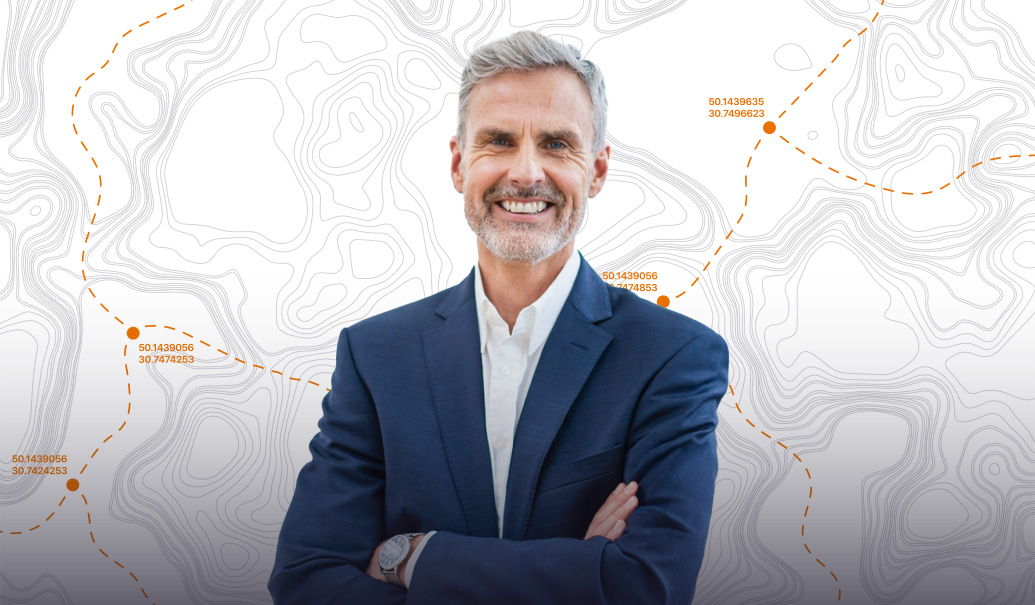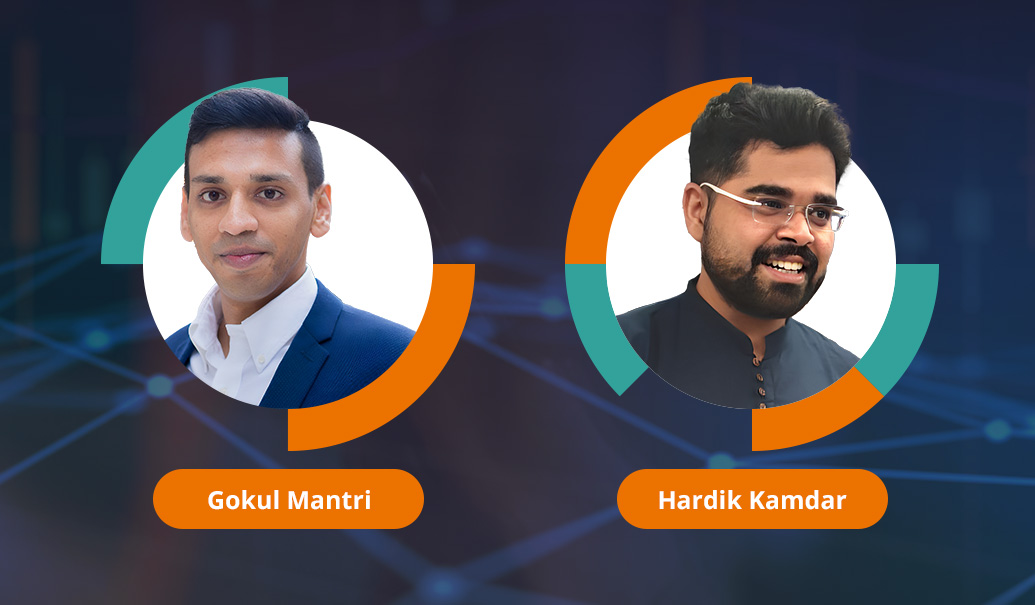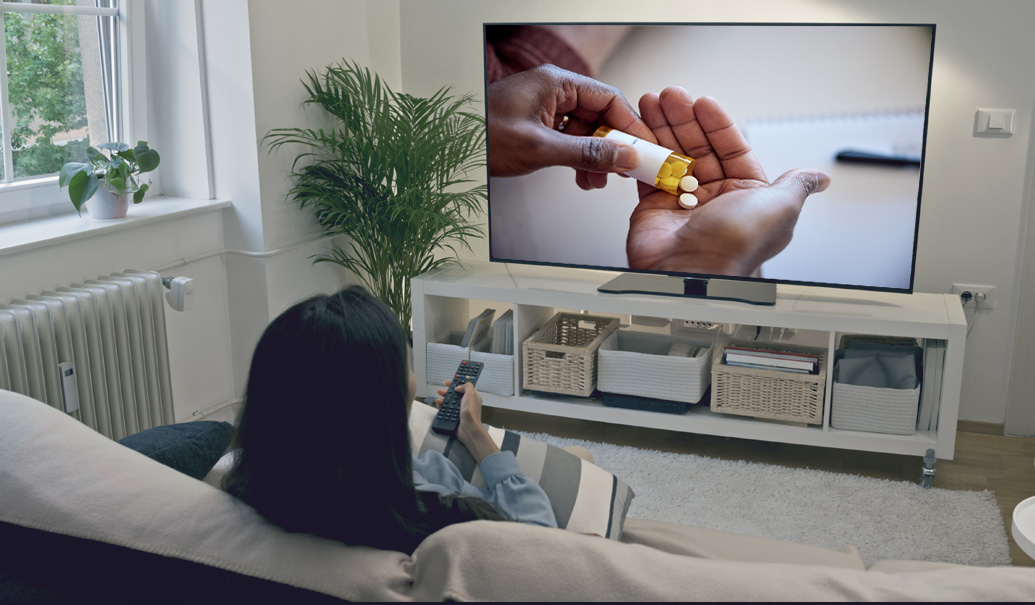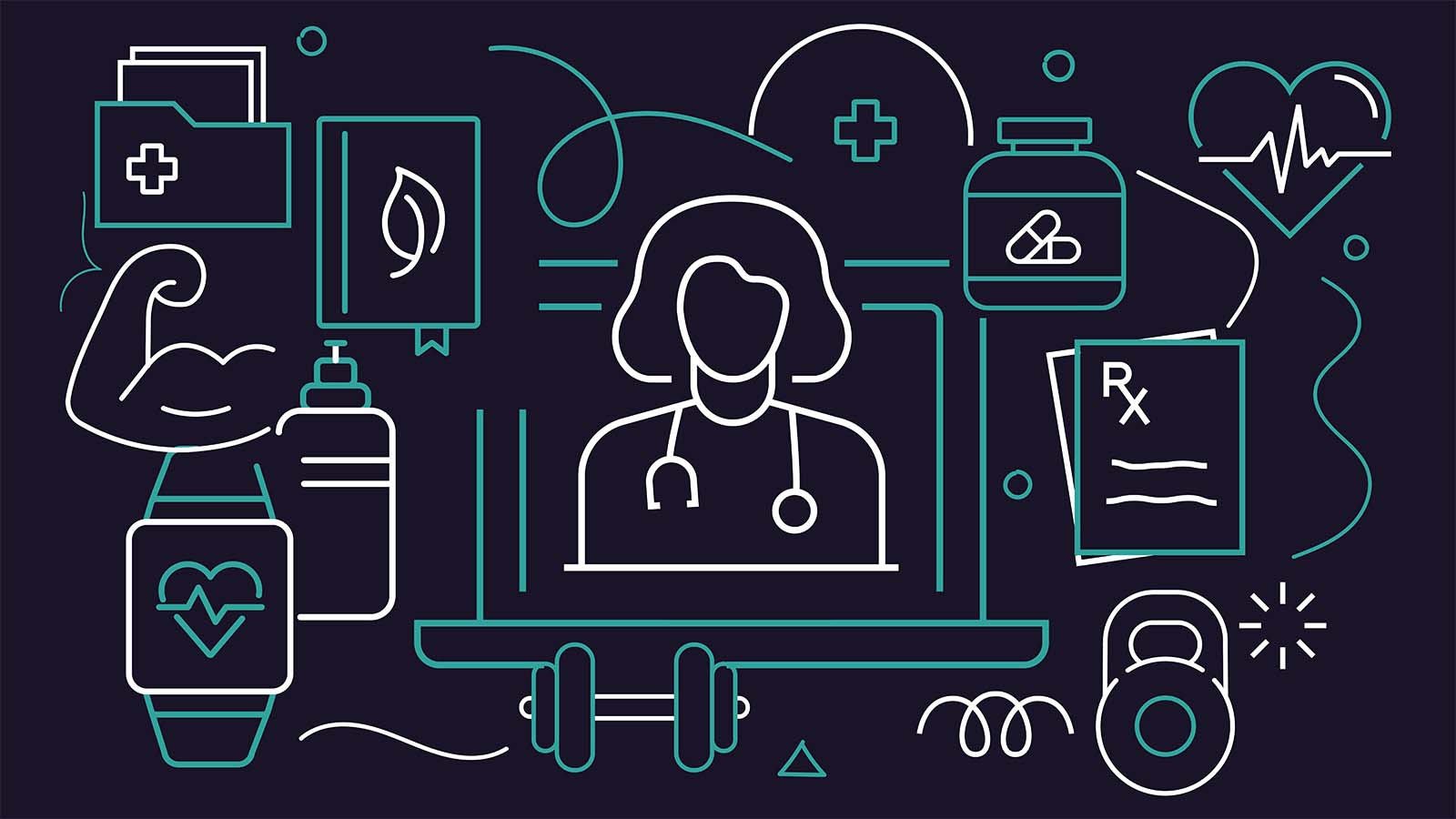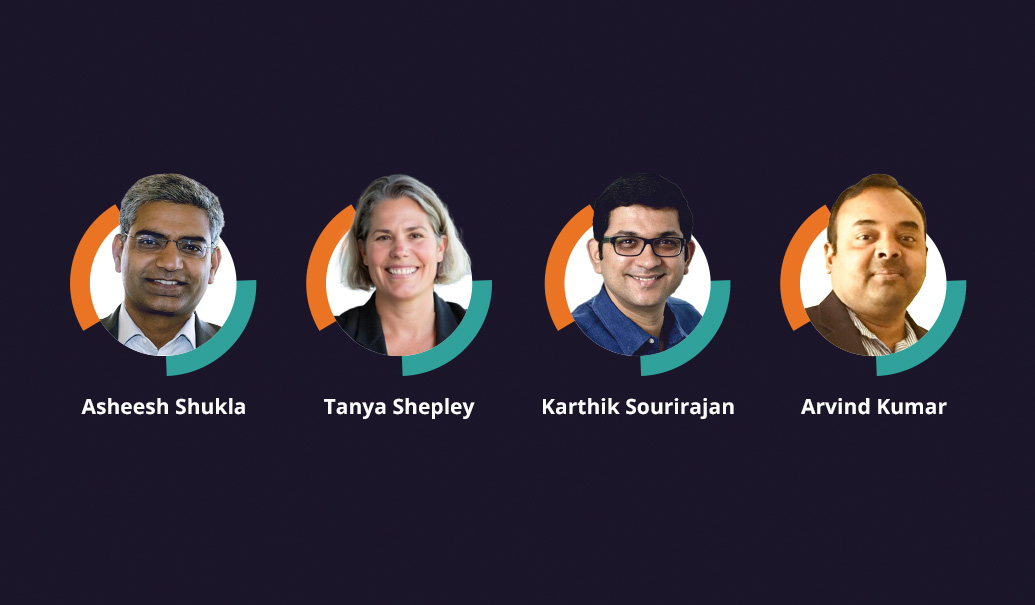The life sciences have been talking about omnichannel for 10 years. Current customer engagement strategies are not enough to meet our challenges in this moment or in the next few years. They aren’t bold enough to get us where we need to go from a top-line revenue design, from bottom-line cost optimization and from an opportunity to set us up for value in the future. But we now have the foundational ecosystem and technology to make it happen, such as platforms like ZAIDYN® Customer Engagement that enable end-to-end engagement transformation. Now, with new technologies and opportunities, it’s the moment to return to omnichannel’s original vision—and talk about how it can be achieved. The key, our panel of experts believes, is having a central and unifying understanding of our customers’ barriers and how we can help solve them. In this article, we talk about realizing the vision of true omnichannel and what U.S. companies should do next.
Maria Whitman: The true omnichannel vision ties directly to our core concept of behavior-changing personalized customer engagement at scale. While some companies have been able to do personalized engagement on a reactive basis, the reality is the true vision—using every channel, every role, every opportunity—hasn’t been reached. And we can’t continue to do things the way they’ve always been done. What are some next-level things companies will need to do differently to drive top-line revenue or reduce costs?
Namita Powers: I think we have to start with the recognition that in pharma, today, everyone and therefore no one owns the customer. Until we solve that, with a central understanding of the customer and what we seek to accomplish with them, we’re going to be stuck in this inability to achieve the true vision of omnichannel. In tomorrow’s commercial model, we truly centralize understanding of our customers’ barriers—what’s getting in their way of the soup-to-nuts adoption journey and how can pharma help solve them. Having a central and unifying understanding of these barriers is going to be the key.
Saby Mitra: If we want to take things to the next level beyond what omnichannel has done so far, I think we’ll see big changes in how companies engage with customers: accelerating revenue growth, optimizing promotional and operational spending and improving product launches.
First, many companies will likely revamp their go-to-market strategies to significantly improve customer reach and scale. They’ll use predictive analytics to target customers dynamically and create omnichannel programs to boost field performance even further, which is crucial for revenue trajectory, especially early in a brand’s life cycle.
Second, in life sciences, selling, general and administrative (SG&A) expenses can be pretty high, ranging from 25% to 40% of revenue. Marketing and sales make up about 85% of that. Companies will look for ways to optimize spending across field operations, media and content. We expect a shift away from linear TV spending, whether or not new government mandates come into play, with more budget going into connected TV for better promotional return on investment.
Third, the pharma industry is gearing up for more than 400 new product launches in the next five years, but recent launches have been hit or miss. Promotion can drive up to 50% of sales at launch, so personalizing customer engagements, speeding up processes and making better decisions at launch are more important now than ever.
Mary Ann Godwin: That personalization is so important, because we have to keep the vision of behavior-changing personalization at scale at the front. To get there, we have to move from interactions to true empowerment of the customer, from preferences to deep personalization (of their practice, their patients, their workflows, their systems, their context). From product orientation to customer orientation. And from individual efforts in pilots to a real-time organizational capability.
Maria Whitman: The life sciences industry has been working to personalize customer engagement models for several years now and is making progress in some areas. How is omnichannel customer engagement working in this context?
Saby Mitra: Among the top 20 pharma companies, we’ve noticed three main archetypes of omnichannel transformation. First, there are the “digital pioneers.” These companies switched from multichannel to omnichannel nearly a decade ago, creating cross-functional operating models and testing impactful AI use cases. Over time, they’ve developed highly efficient and agile AI capabilities with strong customer context and a supportive human ecosystem. They’ve scaled significantly in the U.S. across various business units and brands, but not all have managed to scale globally, especially across digital channels.
Next, we have the “pragmatic expanders.” These companies were quick to follow the pioneers but chose to focus on two or three key areas rather than going broad with omnichannel. They often excel in insight-driven field enablement and personalized customer journeys, prioritizing sophistication over scale.
Then there are the “hyper accelerators.” These companies began their omnichannel journeys just before or during the pandemic, aiming for a leap in building robust and scalable capabilities. They’ve achieved scale by focusing on speed as their competitive advantage, with major sophistication in certain markets.
All three archetypes have seen results, but the success has varied depending on how much personalization they’ve implemented.
Namita Powers: Across all of these archetypes, there are some common threads. We’re finding that the healthcare ecosystem is complex and it’s no longer enough to just talk about why to buy a product—for example, our product is safer and more efficacious than the other guy. It’s much more about how to buy the product.
“The way to solve the barriers problem is to get a common view of what the barriers for every customer are and then act to address them.”
Namita Powers
What we’re finding is regardless of channel to deliver a message, our messages are still content-heavy on why to buy and not how to buy. And we’re missing tons of content. So you can optimize your channels all you want, but if you don’t provide them with the right content to address the actual barrier in the moment, then you’re going to come off as not paying attention. Understanding context, understanding their needs, matching it with the right roles or channels and bringing the right content (beyond just our safety and efficacy messages) is really where the industry needs to move.
Maria Whitman: How should companies approach their customer engagement strategy for 2025 and beyond?
Saby Mitra: Namita mentioned the content gap that needs to be addressed to overcome customer barriers. Speeding up, scaling and making the content supply chain more economical will be crucial for the industry. This will not only help meet unmet customer needs but also enhance personalization. But content alone can only go so far in creating impactful customer engagement models. In the next five years, competitive differentiation will come from improving customer strategy and orchestration and how quickly these can be scaled.
We’re already seeing leading brands shift toward a portfolio-based customer strategy. These brands are also increasing the level of orchestration in their customer engagement across field and marketing, taking a more aggressive approach to harmonizing experiences. About 60% to 70% of addressable activities are now orchestrated engagements with an associated message plan and optimized content for these leading brands. We’ve found that orchestrated customer engagement is much more effective than organic touch points.
Mary Ann Godwin: I think reconsidering “what is content” in this new paradigm is important. When we think about content, we’re usually thinking about how we are promoting our brand. Whereas we’re in a world now, right, where consumers, whether they’re healthcare professionals or patients, are getting information more than ever. What they’re looking for is education on the things that are not promotional.
And now, everybody’s using gen AI to create content, and that content all sounds the same. So it’s not that we have to move from promotional to educational. It’s also about finding the thing that’s really going to resonate, that’s true, that’s authentic and that people can trust.
To add another layer to the content strategy, we can break down the customer approach by mapping barriers and content preferences by audience to strategic goals and a message plan designed to change customer behaviors for each barrier. This would ultimately lead to a modular content plan, including promotional, service-related and educational content. We use a data-driven approach to content planning, optimizing what’s needed to boost engagement. Gen AI can speed up content creation and make it more cost effective.
Namita Powers: The way to solve the barriers problem is to get a common view of what the barriers for every customer are and then act to address them. We can’t do that today. But we can be ready for a future where the CRM shows a longitudinal view of all the barriers facing a customer and then each role knows when and how they should engage to overcome those barriers and then hand off to the next person.
Maria Whitman: What are some successful practices you’ve seen?
Namita Powers: Continuing to measure and reward things like how many calls reps make in a day really feels antithetical to actually moving a customer through an adoption journey and overcoming the barriers they face. I see tremendous power in reframing everything. For years, the emphasis has been on “right content, right channel, right time, right customer.” But it’s always from a functional and product lens, so everyone has an answer to those four questions, but they have it for different channels and different products, regardless whether it’s the same customer.
And what we’re forgetting is putting the customer first in their journey.
Instead, what if we realized that the prior authorization infrastructure required in the community office we support is a barrier across all three brands promoted to that office, and we attempted to solve the infrastructure hurdle with our field reimbursement manager support across all those brands—and our reps were sensitive to the access hurdles the office faced when they peddled the safety and efficacy messages? They acknowledged the barriers, connected to the resources, did it across the brands of relevance to that customer (not to us) and closed the loop.
Mary Ann Godwin: It will be important to reframe the way we think about measurement. If you’re not motivating people to do what you want them to do, they will not do it. Successful companies are rethinking the way people are compensated and rewarded. When you adopt a barriers mindset, you can even start to think about measuring the time to overcoming barriers—how effective our content or strategies were at overcoming those barriers. It’s a very powerful concept.
Saby Mitra: Building on the ideas from Namita and Mary Ann, I think one of the top strategies for modern customer engagement is a portfolio-based approach with individualized targeting, especially when there’s significant customer overlap across brands or product indications.
Imagine a community oncologist who treats patients with 10-12 different types of tumors each quarter, with a constantly changing patient mix. We need to use the right channel, content and timing for each customer. But from a customer-centric perspective, a multi-indication product that addresses different tumor types also needs to engage across the portfolio. This means prioritizing customer indications, optimizing messages and limiting the total number of field and digital touch points per quarter for each individual customer, all at the portfolio level.
A unified customer engagement index would be very useful here to measure the impact across the portfolio.
Maria Whitman: Thinking again of the true omnichannel experience and the bold moves life sciences should be making to make it come to life, what can we learn from other industries?
Namita Powers: Other industries excel at this, particularly in the key account management space, where n=1 customer strategy is a requirement. You see account-based marketing, digital microsites for specific accounts, tailored solutions for the account needs, true, cross-functional collaboration and strategic planning. We hide behind the compliance constraint in pharma, but I believe there’s real application to us if we can work within our compliance context.
Saby Mitra: I believe some of the best digital marketing capabilities are found in industries with a strong B2C focus, like travel and hospitality, e-commerce or retail. These industries have created fascinating digital experiences and ecosystems. For example, some companies not only use web personalization to drive engagement and conversion but also put a lot of effort into governing and optimizing channels at the top and middle of the funnel, leading to a world-class experience.
In one of our media transformation projects for a major travel company, we identified a financial opportunity of more than $200 million annually through revenue growth and cost savings. This was achieved by increasing SEO traffic, reducing bids for paid search ads and converting paid traffic to organic traffic.
As healthcare embraces consumerism, life sciences will have an exciting opportunity to enhance web and commerce areas through digital marketing.
Maria Whitman: Keeping the need to make bold moves in mind, how can companies get started or what moves should they make next?
Namita Powers: I think the biggest thing is to start using your field teams on the ground and all the rich knowledge in their heads to collect field feedback on barriers that customers are facing and start to enable plays to address those barriers.
Mary Ann Godwin: I’d recommend moving beyond pilots and committing to a full transformation. Stop viewing personalized customer engagement as an experiment and instead see it as a way to gain a competitive advantage. Dial up the degree of customer orchestration, both in sophistication and scale.
Saby Mitra: Activate data-driven decision-making, like using predictive analytics and AI to guide your bold moves. Think about how you can integrate these efforts across field, digital and medical teams. Rethink your product launches and how you can embed personalization into them. And be smart about your investments, as companies continue to want to do a lot more with far less.
Add insights to your inbox
We’ll send you content you’ll want to read – and put to use.






